Board of Education
- Dr. H. Beistle
- Frank Habicht
- Philip Hanlin
- Mrs. Claude Imhoff
- William Morgenthau
- Ida Rice—the longest serving board member from 1914-1947
- John Russell
- Lowell Swem
- Dr. J.C. Strayer
Superintendent 1940-49
- Mr. Harold Stark continued as superintendent [1923-1954].
- Mr. Pierre Bailey served as assistant superintendent during part of the 1940s.
Principal
- Mr. Paul Moore served as principal from 1936-1942.
- Mr. Pierre Bailey served as principal from 1942 and also assistant superintendent part of this time.
Staff
- In addition to principal, teachers, secretaries, and custodians, BHS had a school nurse with her office on the first floor of BHS.
- During the school year of 1939-1940, BHS boasted 18 teachers plus school nurse. THE PINES listed all staff, their subjects taught, where they went to university, their extra-curricular duties plus their own clubs, hobbies and interests.
Graduating Students
- 1940–56
- 1941—75 [just prior to World War II]
- 1942—70 [World War II saw some enlist]
- 1943—62
- 1944—49
- 1945–67
- 1946—80 [some returned to graduate after the war]
- 1947—90
- 1948—69
- 1949–96
Timeline of 1940-1949
- In November 1940, the high school held the initial draft registration for the pending war.
- After December 7, 1941, PEARL HARBOR and WORLD WAR II dominated the students’ concerns. Two seniors joined the navy in December [Charles Matthews and William Snodgrass]. The class of ’42 lost two members prior to graduation—Donald Keller during a snowstorm and Rudolph Reich due to pneumonia.
- A regular column in the BERRIEN COUNTY RECORD appeared in 1941— “With the Boys in Service.” This column continued for decades. During World War II, many of those highlighted would have been students in the classrooms and players on the fields during peacetime.
- During the early 1940s, students were offered a choice of general, college preparatory, commercial or vocational courses.
- From 1943 through 1945 the students at BHS published no yearbooks, THE PINES, due to rationing and World War II.
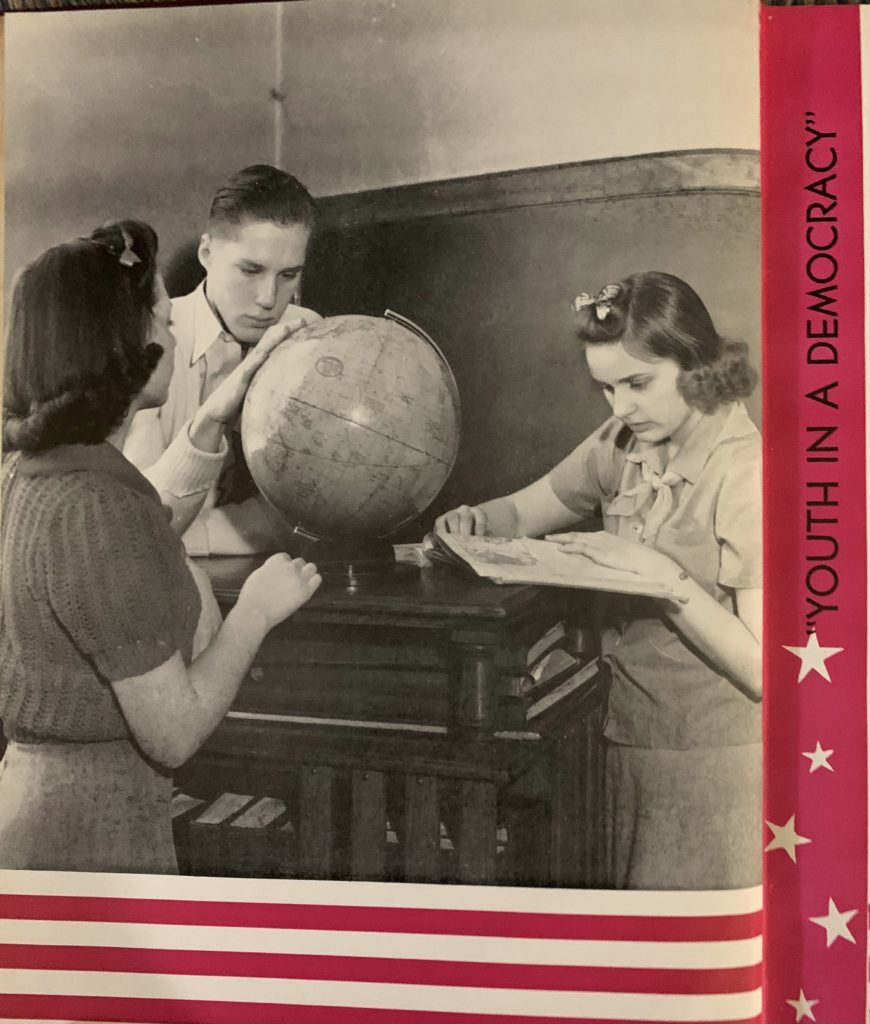
- THE PINES of 1946 included information about the class of ’43. There were 65 graduates who received their diplomas in the auditorium. By 1946 12 of the class of ‘43married, 14 had served in the Army [Gus Fagras died while serving in Europe], 12 served in the Navy, 2 Maries, 1 WAVE, 1 went to college and another 8 women were working at various businesses around Buchanan.
- THE PINES of 1946 included information about the class of ’44, which numbered 51. It was noted that 4 served in the Army, 10 served in the Navy and 1 was still serving in the Marines in China. It was noted that one who served in the Navy was a father of a future member of the class of ’57 and thus the first parent in the class of 1944. Four men were employed in various occupations. BHS class of ’44 had four women who furthered their education while others worked in various positions.
- THE PINES of 1946 included this last World War II class information. There were 66 who graduated in 1945, including Charles Matthews who became class President after his discharge from the Navy. Again many served in the military and were working upon graduation while others continued their education.
- In 1946, THE PINES theme was atomic energy. “Since the advent of the atomic bomb and the discussion concerning atomic energy, the picture of the future has changed; so the class of 1946 presents the theme of the atomic age as youth views the future.”
- Two graduates in the class of 1946 had served in World War II—Robert Jasper and William Snodgrass. One student of the Class of ’46 perished in Lake Michigan in 1944—Francis Luster.
- In 1946, there were 66 Seniors, 91 Juniors, 106 Sophomores, and 129 Freshmen—the largest high school student body to date. This was due in part to the recruitment effort of Clark Equipment Company during the war. In addition to the high school students, there were 76 in eighth grade, 92 in seventh grade plus there were still elementary grades in the building. Two new programs became options for young men. The first was Day Trade Machine Shop—one hour of theory or related subjects and then three hours of machine shop practice per day. This was available to sophomore young men who were at least 15. The students could take this course for two years. Apprenticeship was the second and established with Clark Equipment in cooperation with the local UAW-CIO, the State Board of Control for Vocational Education and BHS. This offered training in the following: machinist, toolmaking, molding, welding, electrician, plumber and tinsmith
- It was noted that in 1946 the following would have graduated with the class had they not served in World War II: Chuck Copeland, Wayne Watson, Carl Thurston, George Batchelor, Vaugh Best, Arthur Bailey, LeRoy Mikesell, Kenny Dunlap, Raymond Ferris, Morton Hemple, Jack Jasper and Lenzy Swaim.
- A 25-acre parcel west of the Buchanan High School was purchased from William Bohl, Sr. and Etta Bohl by a group of community residents called the Buchanan Memorial Field, Inc. in 1946. This would become Memorial Field. The trustee and treasurer of this group was Robert Koenigshof, who signed the deed on April 12, 1946. Other members of Buchanan Memorial Field, Inc. included the president, B.R. Desenberg, and secretary, Pierre Bailey, who also served as the assistant superintendent and principal of Buchanan Community Schools at that time.
- 1946–“Grading Finished on Football Field at Memorial Park. Due to the large number of Clark men and women who served and are now serving in the armed forces there is naturally a lively interest in the project of building Memorial Field on the 25 acres of land just west of the present Buchanan high school building. This was formerly the William Bohl property, and it was purchased by the Memorial Park association for $8,860, including some 3,600 growing pieces of nursery stock, all of which will be used in landscaping the park. The total estimated cost of the completed project is $65,000
“The park area will accommodate a football playing field, practice field, permanent bleachers and dressing rooms, a track, baseball diamond, softball diamond, tennis courts, parking space, etc.
“Generous support has been received from the public, and of course there is still need for further support. This civic minded and patriotic community will see the project through to completion.” CLARK EQUIPMENT COMPANY EMPLOYEES NEWS, November 1946, page 17.
It should be noted that Clark Equipment employed William Bohl as a director of buildings and grounds. The flowers and trees surrounding the Clark Equipment buildings brought many visitors to the area. Also, the original plans included an area for tennis courts built much later and an amphitheater which were not built.
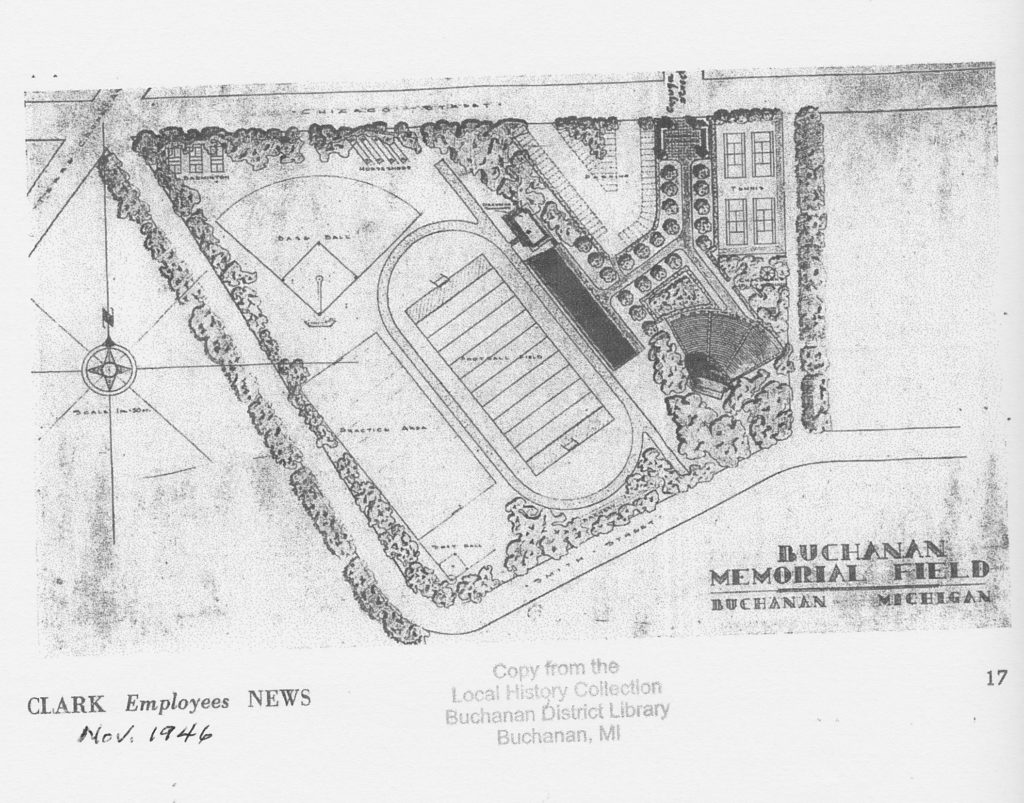
- On October 8, 1947Buchanan dedicated Memorial Field, with the first football game. That spring student athletes played baseball on a portion of Memorial Field.
- In the fall of 1947 Moccasin opened as the first unified, dedicated elementary school. The baby boom generation had to have elementary schools. Some elementary students continued to attend classes in the 1922 building for some time.
- In the fall of 1947, a refresher in elementary blueprint reading for adults in Buchanan was held in the evenings for then weeks. Those who successfully completed the course work given free of charge by Clark Equipment received certification.
- In 1947 a ten week course in education was offered to our faculty at BHS by the University of Michigan. Dr. Irving Anderson instructed the faculty on the subject of Psychology of Reading and Remedial Reading. All teachers in grade and high school attended this ten-week course held on Tuesdays in the fall.
- Buchanan High School had a “day trade machine shop” in 1948 where the purpose was to prepare students for approved trades of “industrial character.” Sophomore males were in this course of study for three hours a day and then one hour involved a course in a related field. This became the foundation of apprenticeship courses at Clark Equipment Company. Buchanan had the most complete machine shop in Berrien County in part due to the ability to purchase surplus machine tools after World War II. In 1942 the shop program had five pieces worth $1200 but by 1948 the program boasted twenty-five pieces of equipment valued at $50,000.
- Buchanan Memorial Field, Inc. sold the property known as Memorial Field to the City of Buchanan on June 29, 1949. The President of Buchanan Memorial Field, Inc. was B.R. Desenberg. The sale price was “One Dollar and other good and valuable consideration but not more than One Hundred Dollars.”
“IT IS UNDERSTOOD AND AGREED, as a condition of the acceptance of this conveyance by the City of Buchanan, that said lands are not taken in a proprietary capacity, but that the same are taken in trust for the use of the public for recreational, park, and playground use.” [as recorded on deed]
- BHS started two new programs at the end of the decade in 1949. The first was a guidance course to aid students in making better decisions both in and out of school. It was part of each grade level [9-12]. Each student met with their grade level counselor where the discussion revolved around vocational, educational and personal problems. “The greatest benefit of the guidance course for the student is the provision of a reliable, trustworthy adult with whom he can freely discuss any problem which may be troubling him.” [THE PINES]. The second new program introduced was speech correction. “This program is especially designed for boys and girls who have speech that is not in the normal range.” These classes meet twice a week for thirty minutes with only ten students per class with a total of 60 students diligently working on improving their skills.
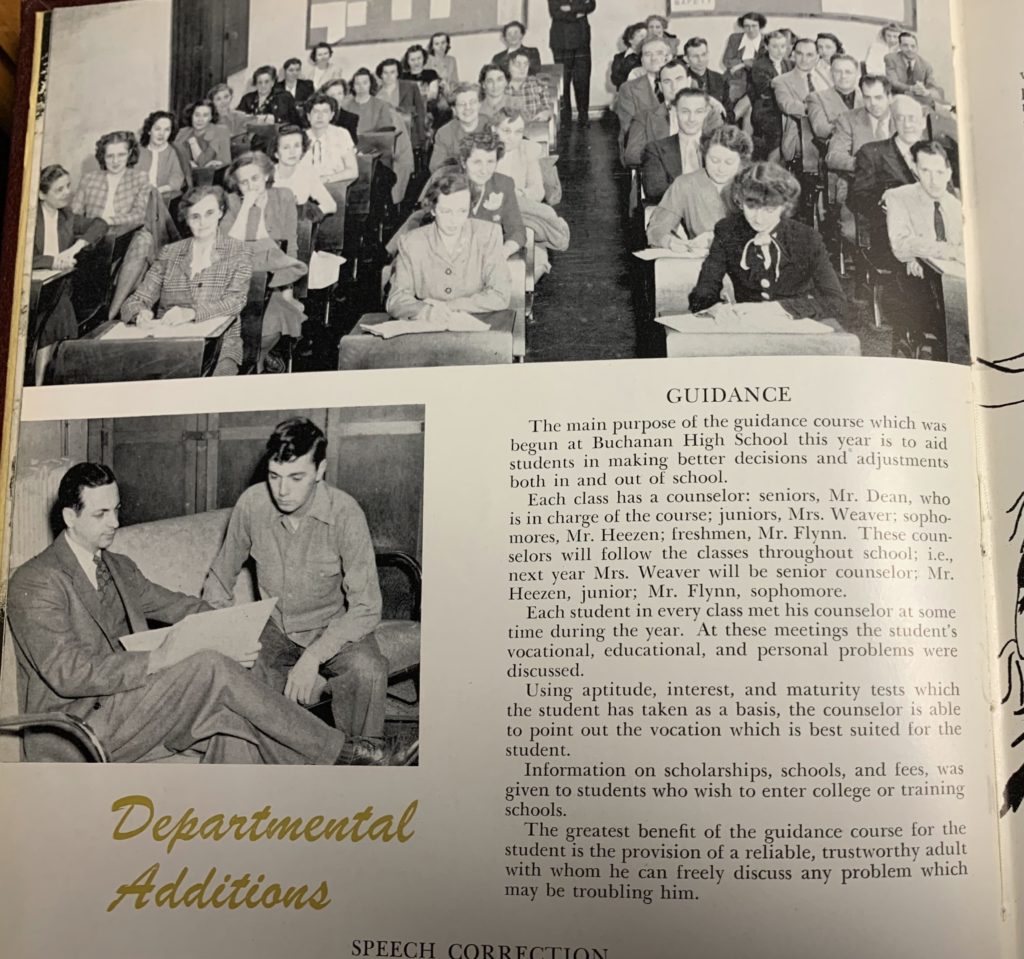
Classes offered [partial list]
- Agriculture
- Algebra
- Apprentice program
- Arithmetic
- Art
- Band
- Chemistry
- Commercial courses
- Commercial law
- English courses
- Foods
- Geometry
- History
- Home economics
- Latin
- Machine shop
- Math courses
- Mechanical drawing
- Physical Education—boys and girls
- Physics
- Shop courses
- Social Studies courses
- Spanish
- Trigonometry

Student Activities
- Apprenticeship was established with Clark Equipment in cooperation with the local UAW-CIO, the State Board of Control for Vocational Education and BHS. This offered training in the following: machinist, took making, molding, welding, electrician, plumber and tinsmith.
- Band
- Baseball was added for the first time in many years in the spring of 1945.
- Basketball
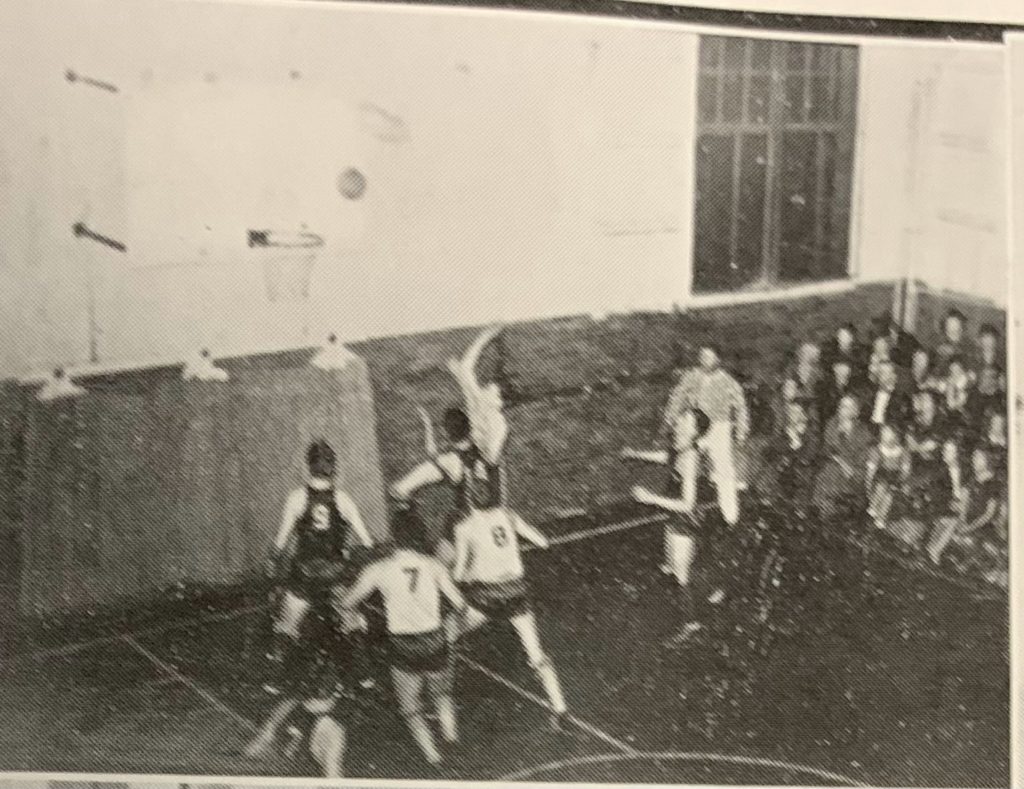
- Buckhorn, the school newspaper, began publication in 1944.
- Cheerleaders for the first time were included in THE PINES
- Dances were held in the gymnasium
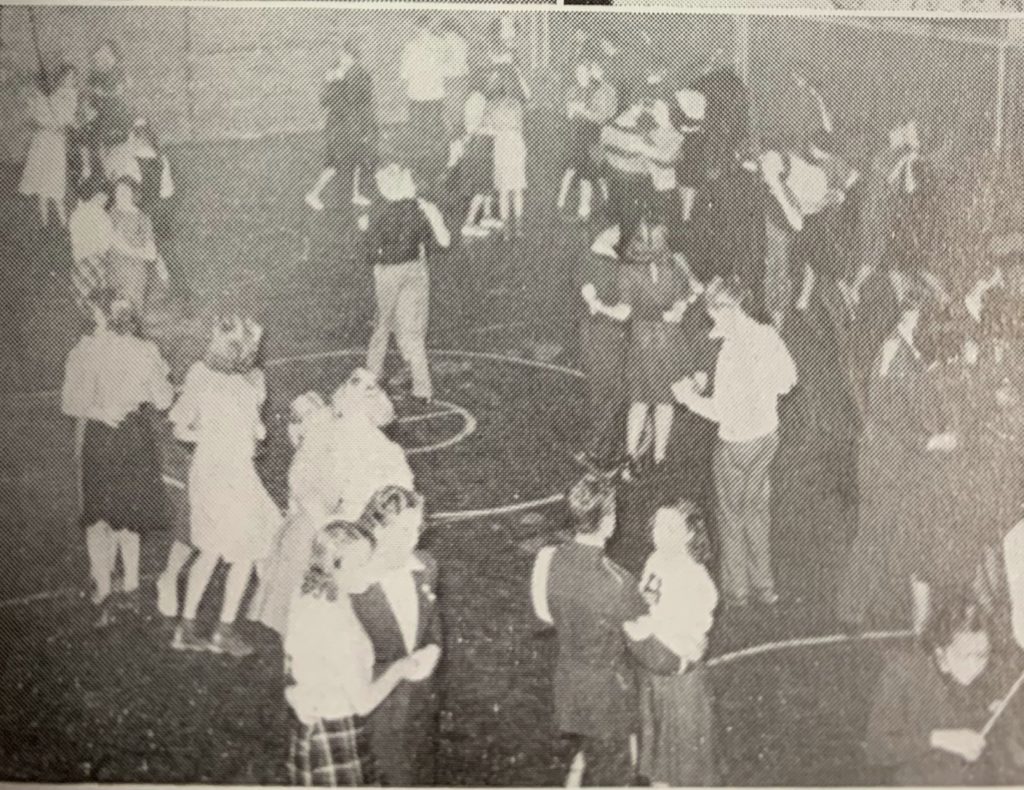
- Day Trade Machine Shop began in the mid-1940s with one hour of theory or related subjects and then three hours of machine shop practice per day. This was available to sophomore young men who were at least 15. The students could take this course for two years.

- Football— Football players enjoyed a winning streak of 21 games until falling to Dowagiac in 1940. The undefeated team of 1948 won their second straight BIG 7 championship. The Lions sponsored the annual football banquet with home movies of games being shown along with speeches by adults.
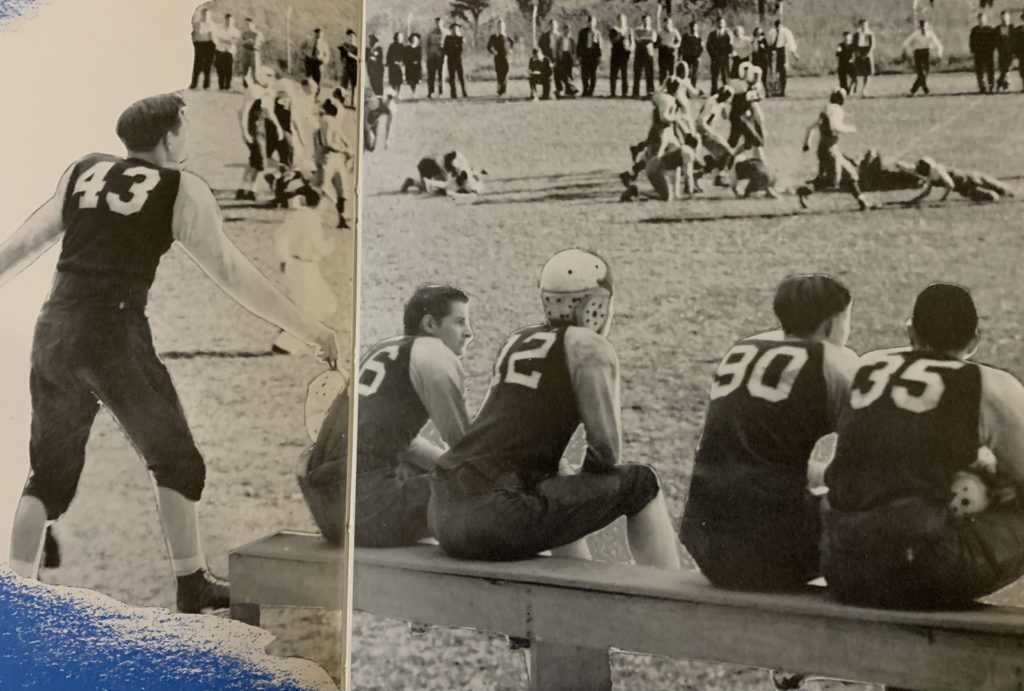
- GAA raised money selling hotdogs at football and basketball for tennis courts at the new Memorial Field in 1947. This was the first mention of a concession stand.
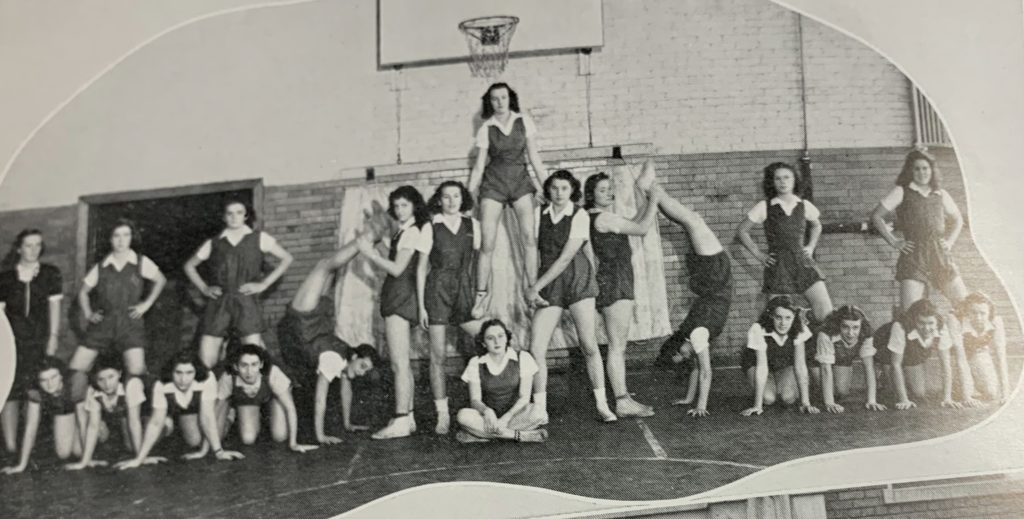
- Gavel Club emphasized better speech in 1941
- Girls’ Orchestra
- Glee Club
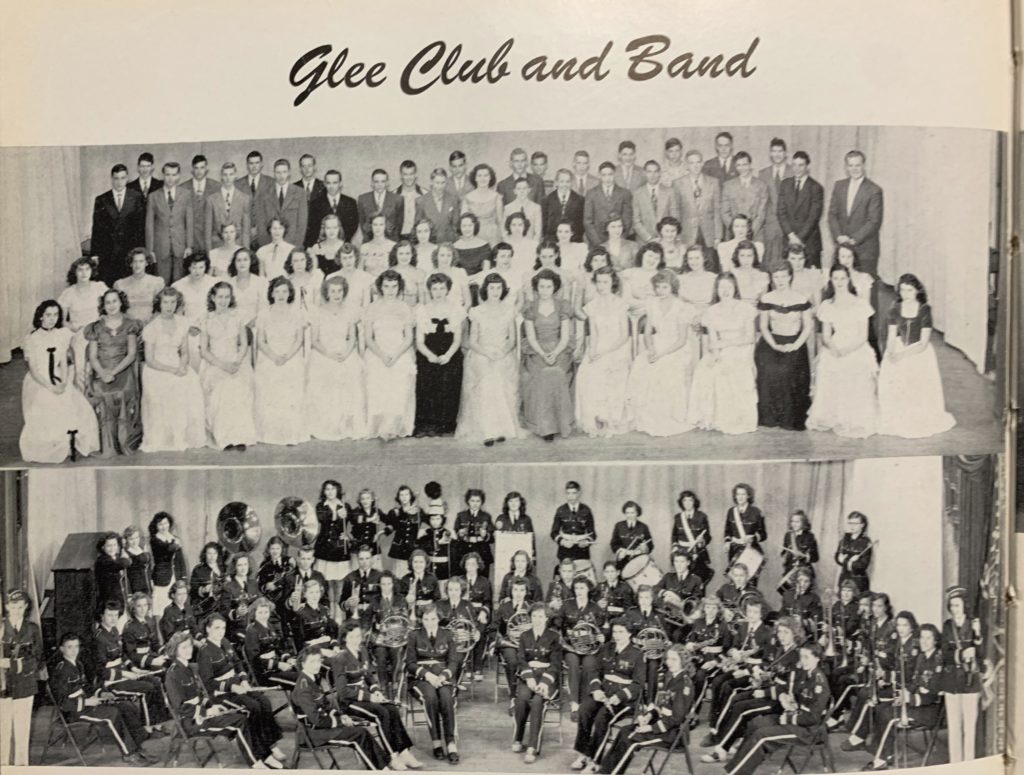
- Junior Red Cross became an extracurricular activity during the 1940s.
- Memorial Field became the home of the BUCKS for football, baseball, track, and softball.
- Spanish Club started in 1945
- The PINES was suspended during the war years due in part to rationing.
- There was a bonfire and snake dance for homecoming.
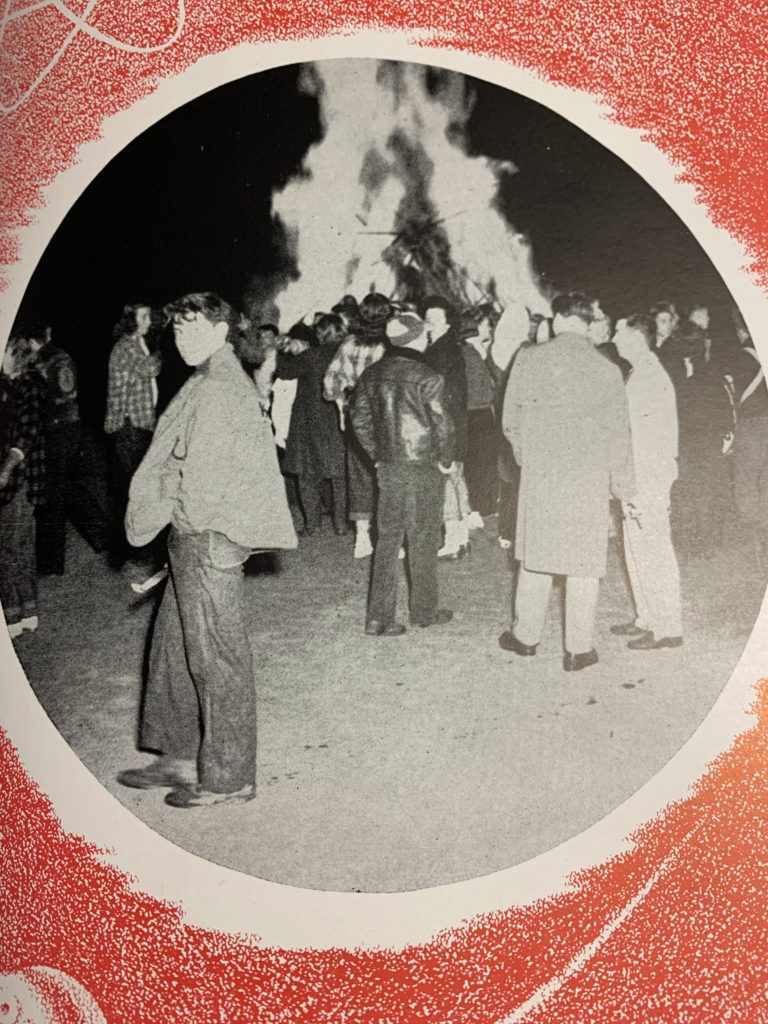
- There was an all-sports banquet in the spring of 1949. Prior to this year, there were sports assemblies.
- World War dominated the school from 1942-45
